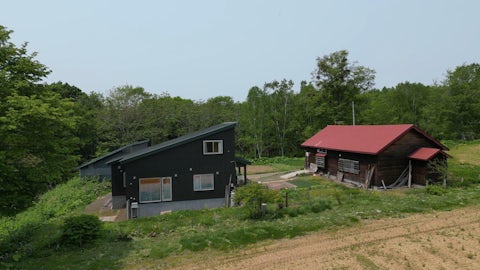
As snow fell over the weekend in the mountains of Hokkaido, it's time to look ahead to the predictions and forecasts from the Japan Meteorological Association (JMA) for the upcoming winter.
The JMA has just released its eagerly awaited seasonal forecast for the upcoming winter, bringing good news for skiers. Unlike last year’s report, which accurately predicted below-average snowfall and warmer temperatures due to El Niño, this season’s forecast suggests a different outlook.
JMA now forecasts a 60% chance of La Niña conditions developing, a weather phenomenon known to bring colder temperatures and heavier snowfall. The National Oceanic and Atmospheric Administration (NOAA) supports this prediction with a 71% likelihood of La Niña emerging.
Snowfall Predictions
JMA expects a 40% chance of above-average snowfall across Japan this winter, with a similar 40% likelihood of near-normal levels, and only a 20% chance of below-average snowfall. For context, the last La Niña-impacted season in 2021-22 began with a similar forecast and resulted in record-breaking snowfall. Resorts like those in the Myoko region saw over 16 meters of snow, compared to 10.5 meters last season.
This trend aligns with historical data from Snow Japan, which shows that during La Niña seasons Myoko has averaged 13.8 meters of snow, compared to 12.4 meters during other seasons. Similarly, Nozawa Onsen averaged nearly 9 meters with La Niña, versus just 7.2 meters without.
Hokkaido, home to some of the most world-famous Japanese ski resorts like Niseko, also benefits significantly from La Niña conditions. Niseko experienced 11.4 meters of snow in 2021-22, and according to data from Kutchan Town, La Niña seasons bring an average of an extra metre of snow at ground level, with even more at higher altitudes.
Temperature Forecasts
Average temperatures across Hokkaido and Tohoku are more likely to remain within normal ranges (40%), with a 30% chance of above- or below-normal temperatures. For reference, Hokkaido’s January temperatures are already much colder than the mainland, with Furano resort averaging -12°C to -4°C. Meanwhile, Niigata, located in Japan’s snow country region, typically sees January temperatures between 2°C and 7°C.
The Hokuriku region, home to popular ski destinations like Hakuba Valley and Nozawa Onsen, has a 40% chance of below-average temperatures, which could lead to more pristine powder, better snow retention, and a potentially extended ski season.
In stark contrast, last winter was Japan’s second warmest on record, with temperatures averaging 1.27°C higher than normal between December and February. As a result, some resorts struggled with comparatively poor snow conditions, although nothing as dramatic as the green slopes experienced in some European and North American resorts.
Get Your Tickets Now!
Last year’s winter was marked by El Niño and unusually warm temperatures, but this year’s forecast from JMA points to a much colder and snowier season ahead, thanks to the likely return of La Niña. Skiers can look forward to abundant snowfall and ideal conditions across Japan’s top ski regions, from the slopes of Nagano and Niigata to the powder-filled resorts of Hokkaido.
With the yen currently at its lowest levels in decades, now is the perfect time to plan your ski trip to Japan and the pick up your dream house or apartment!
Don’t wait—check out the properties available for sale in Japan's top resort now and make this winter your best one yet!












